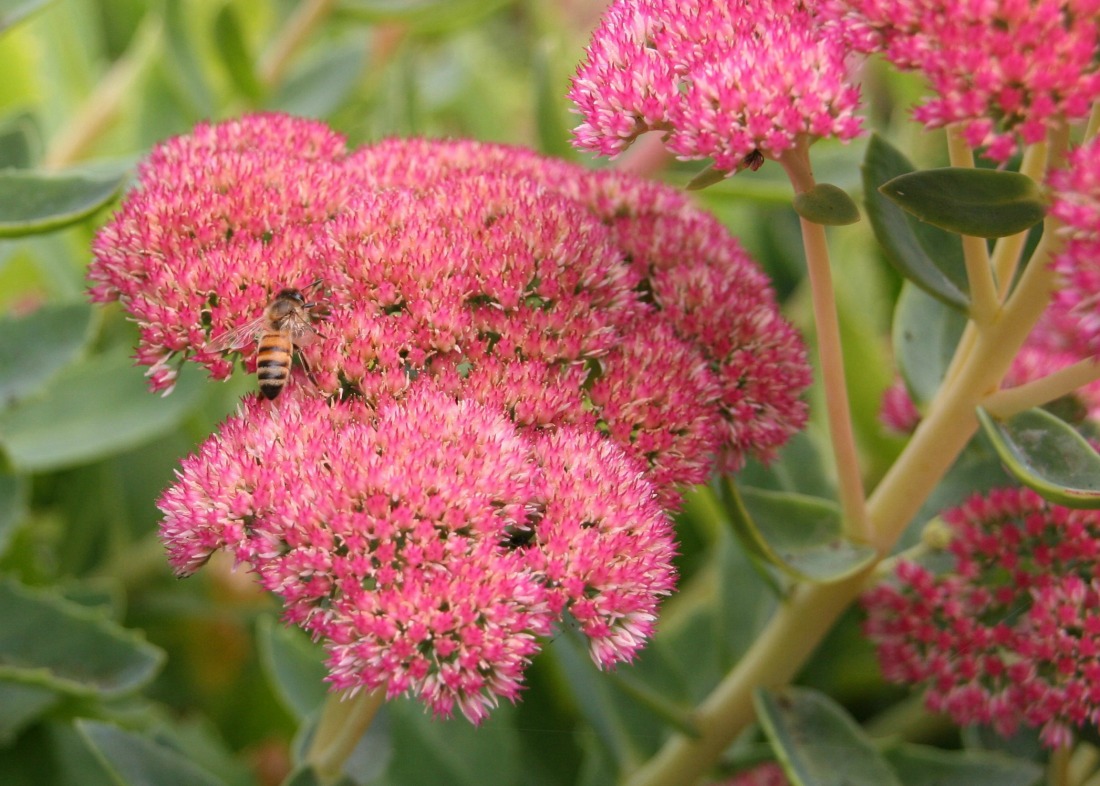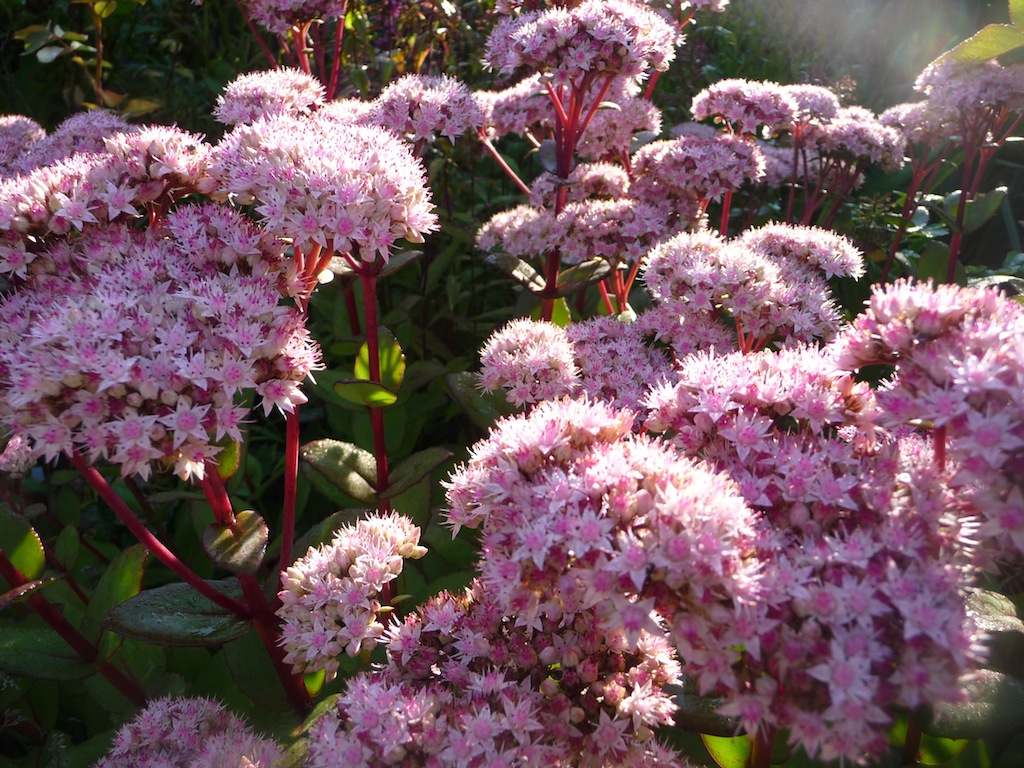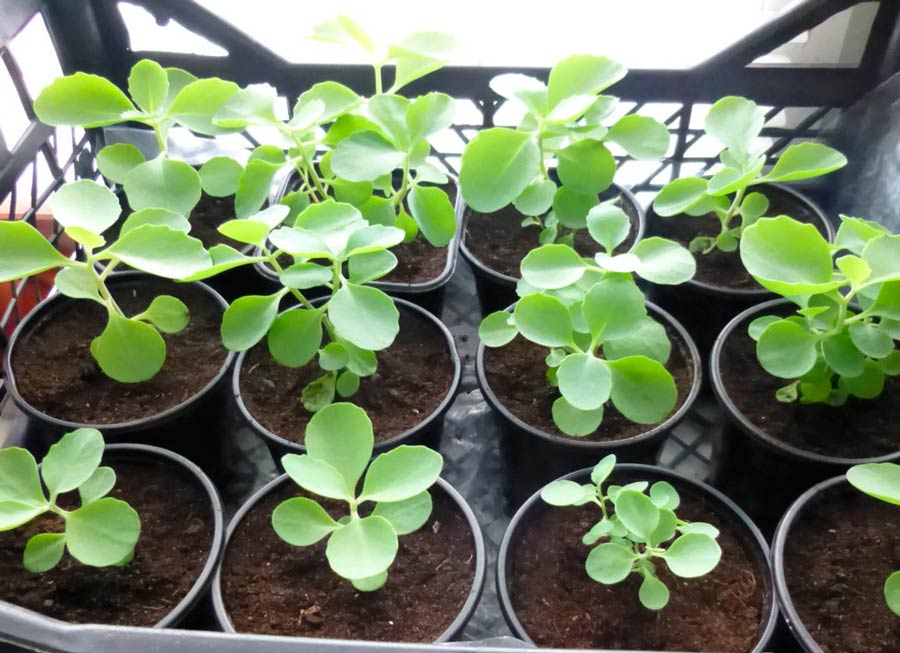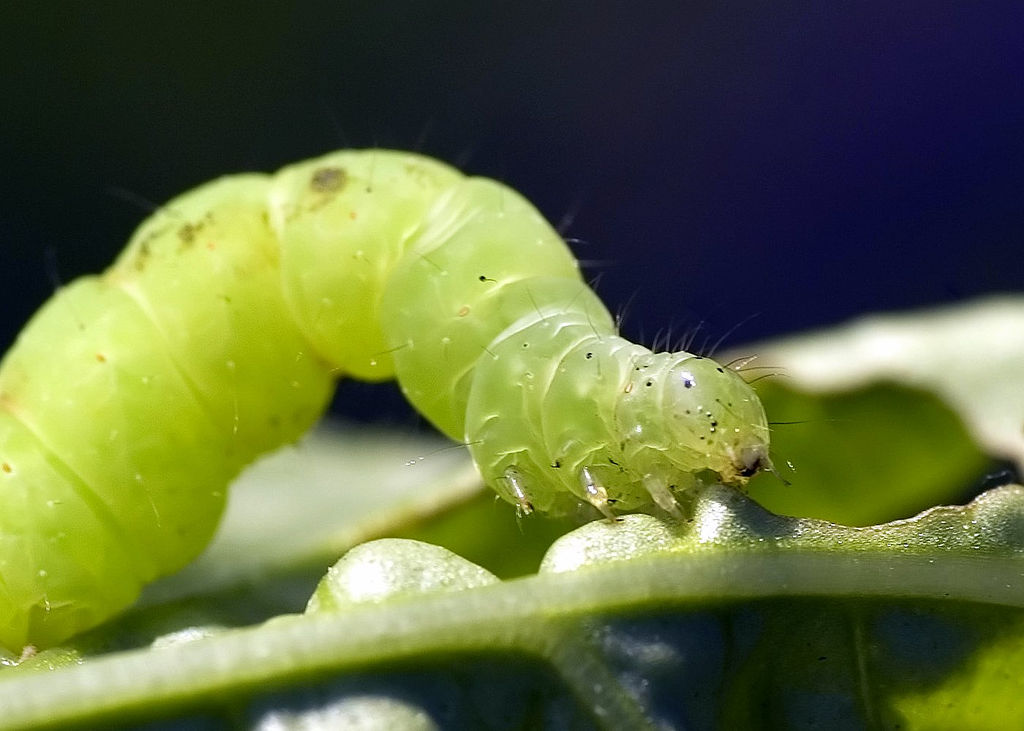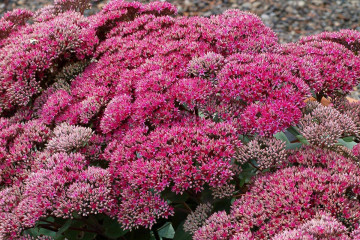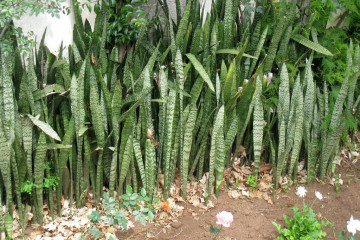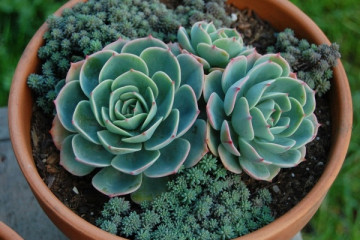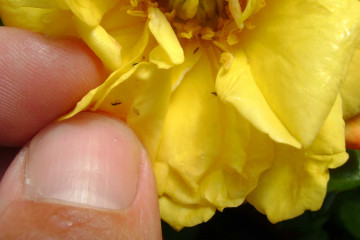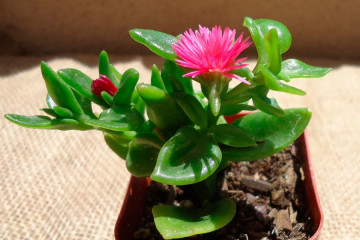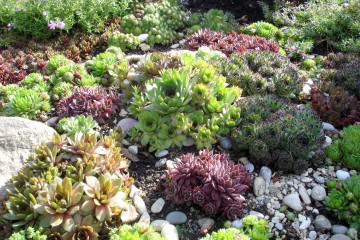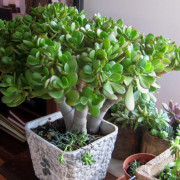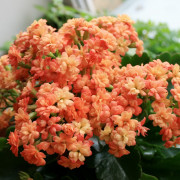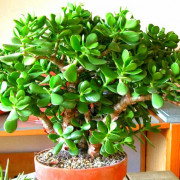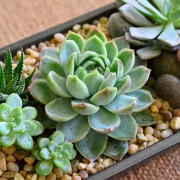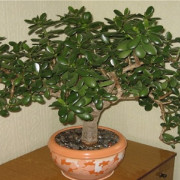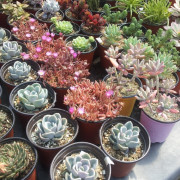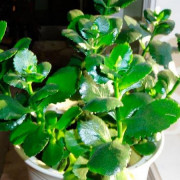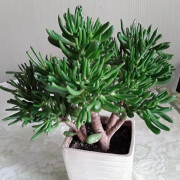Sedum - planting and care, reproduction
Content:
Sedum, or sedum, is an amazing plant with a rich history. Many ancient myths and beliefs are associated with it. Gardeners distinguish many varieties of culture: bushes, vines, creeping along the ground. Sedum is grown both in the garden and at home. Many plant varieties are appreciated by flower growers for their "unpalatable character" and simplicity.
Stonecrop characteristics: varieties and varieties
A short herbaceous plant is a succulent. Easily withstands drought, grows in infertile soil.
Two types of stonecrops are conventionally distinguished:
- Not at all adapted to growing in the climatic conditions of the Russian plain. They are bred at home as perennial crops, or annual flowers growing in flower beds in the open field.
- Ground cover - perennials. Resistant to frost and other whims of nature. Under natural conditions, they are found in the southern regions of the country (for example, in the Caucasus).
Features of stonecrops
Shrub or semi-shrub with branched stems up to 60 cm high. The foliage is dense, resilient, of various sizes, shades and shapes:
- cylindrical;
- flat.
Strong leaves are located on thick stems, not petioles. The variety of colors of leaf plates (gray, pink, green, gray) depends not only on the variety, but on the growing conditions.
Small flowers-stars (yellow, blue, pink, white) are collected in inflorescences-caps, which makes the plant looks beautiful and elegant. It blooms until late autumn, when garden colors fade, and only sedum stands out as a bright spot against the background of wilted plants.
The pleasant smell attracts many bees circling above the bushes of the honey plant.
Varieties and varieties of culture
More than five hundred species of these succulents are numbered by flower growers. Only a few of them are grown as an ornamental culture. Used as a decoration for rock gardens, borders. At home, they plant sedum, which is easy to care for.
Stonecrop common
Represented by two well-known varieties:
- Windsor Linda;
- Matron.
Perennial up to 30 cm high. Strong fleshy leaves, serrated along the edges, sit on a thick stem. Flowering - on the top of the stem, small flowers collected in umbrellas. Aqua foliage with pink-brown dusting. Pale pink flowers, put together, look bright and festive, decorate an alpine slide, a border.
Linda has burgundy stems, dark red leaves, hemispherical inflorescences. An exotic beauty from Mexico, a thermophilic Matrona. It is grown only at home as an ampelous culture. In the summer, when it is warm, they hang out the pots with the plant on the balconies, in the summer cottage under a canopy. On long (up to 1 m) shoots, rising 20 cm and falling down, thick leaves. From a light touch, they fall off.
Red-colored variety
A low-growing plant with shoots creeping along the ground up to 30 cm long. The leaves are clustered on top of the stems. The foliage is round, fleshy, dense, juicy green at the base, red at the ends. Yellow flowers on a red-green background look spectacular.
Sedum prominent
It grows naturally in Asian countries. The plant is medium-sized, up to half a meter in height. Tuberous roots. Blue-green leaves are located on straight stems.
Stonecrop Kamchatka
Medium-sized representative of the family. On the territory of Russia, it is found in the Far East. The life span of the plant is up to 15 years. In the 5th year, the exotic species of sedum deteriorates. Stonecrop transplantation is becoming relevant.
Planting a plant
Sedum is a light-loving culture, therefore, the place where to plant sedum should be light. In natural conditions, the plant grows among rocks and stones.
In fertile soils, the decorative properties of sedum will manifest themselves with the greatest return. The flowering will be lush and long-lasting, and the greenery will be bright and shiny.
Seed planting
Grow a succulent culture from seeds or seedlings. The most troublesome way is seed. But for many gardeners, it is preferable. Self-prepared planting material is a guarantee of the health of the future plant.
Stonecrop planting technology:
- Seeds are sown in spring (late March – April) in boxes, containers, which are filled with garden soil with coarse sand. The seeds are buried, leaving an interval between them of at least 5 cm.
- Crops are abundantly moistened with water. Cover with glass or film, send for stratification.
- The room should be cool with a temperature from +1 ℃ to +5 ℃ (refrigerator, underground, basement).
- During the entire period of stratification, the crops are ventilated, making sure that condensation does not collect on the glass or film. The soil is constantly moistened.
After 2 weeks, the crops are returned to a room with a temperature of up to +20 ℃. The first shoots should appear 20-25 days after sowing.
Sometimes individual gardeners use podwinter sowing. They are sown according to the same scheme, but sent to the greenhouse for stratification. In April, the seedlings are brought home for growing.
Planting seedlings
Stonecrop shoots are small. After their amicable appearance, the glass or film is removed. Plants will dive if not planted in a separate pot. Seedlings are traditionally taken care of:
- watered;
- loosen;
- hardened.
Hardening is carried out a week before planting in the ground. Seedlings are sent for a walk, each time increasing the time spent on the street.
Planting sedum in the ground
Novice gardeners sometimes find it difficult to plant sedum correctly so that it can easily take root:
- When the weather is stable and warm, the night frosts will stop (end of May), it is time to transplant the seedlings to a permanent place.
- Fertilize the soil with organic matter before planting. The distance between the planting pits is at least 20 cm. The plants are watered abundantly.
Unpretentious sedum grows on poor soils, but without sunlight it feels bad, although a slight partial shade at the site of cultivation is possible. Groundcover sedum planting and caring for it does not differ from the cultivation of other varieties.
Watering and loosening the soil
Despite being undemanding to growing, minimal care is needed. Caring for the plant does not require excessive effort. Sedum can withstand drought, but that doesn't mean it doesn't need to be watered, especially if summers are hot and dry.
In temperate climates with sufficient rainfall, sedum does not need watering. It is not worth pouring over the plant. Loosening the soil around the bushes regularly, providing oxygen to the root system. Sedum requires frequent weeding, otherwise the weeds will stifle the surface roots of the sprawling plant species.
Reproduction methods
The sedum plant is bred with seeds, cuttings, dividing the bush.
- Stonecrop propagation by cuttings is available even to an inexperienced grower. In the spring, in warm weather, a stalk is cut with a sharp knife, 2 buds are left on it, the lower leaves are removed. They are buried in the ground by 3-4 cm or cut cuttings are immersed in water. As soon as the roots grow, they are transferred to a flower bed or flowerpot. Even if you leave the cuttings without water, they will take root aerial.
- How else does stonecrop multiply? By dividing the bush. This method is convenient when you need to update the hive. The plant is dug up, old roots and shoots are removed, young stems are left with new roots and buds. Divide before the start of active development of the plant.
- Sedum seed propagation is the most troublesome method. Gardeners wait for the peduncles to dry, then cut them off with a sharp knife. Since the plant blooms for a long time, before winter, the seeds often do not ripen. Experienced flower growers do not recommend propagating stonecrop seeds.
Top dressing and fertilizers
It is enough to fertilize the land with organic matter (manure, humus) when preparing the site for planting. Florists recommend being careful with nitrogen fertilizers, since they spoil the foliage, the plant loses its resistance to frost.
Complex mineral dressings with phosphorus, potassium are permissible for high stonecrops no more than 2 times in the summer.
Plant transplant
Gardeners do not recommend growing a bush for more than 5 years in one place. The plant is healed by changing the place of cultivation.
How to transplant sedum plant? Step-by-step instruction:
- In early spring, until the sedum "woke up" after winter dormancy, the bush is carefully dug up.
- A sharp knife is used to separate parts, leaving on each bud, roots, and put in the shade for 2-3 hours.
- Treat the separation points with fungicidal agents before planting the plant in a new flower bed.
Sedum pruning
When the sedum fades (in late autumn), all life processes in the plant slow down, gardeners cut off the shoots at the root. In ground cover species, the shoots that rise above the "carpet" are pruned.
Pests and diseases
Sedum is a viable culture, it rarely gets sick. Plant problems arise from improper cultivation or from bad weather conditions.
From frequent watering, roots rot, conditions are created for the life of fungi. For diseases, stonecrop is treated with preparations with fungicides, if the disease is at an early stage. It is useless to spray plants with advanced disease, it is destroyed.
The vital activity of aphids, caterpillars, sawers, weevils and other "amateurs" stonecrop harms the health of the plant. They fight pests with insecticides: actellik, phytoverm.
Flowering and care during this period
Not all sedum varieties bloom equally beautifully. The low varieties have interesting foliage, and the bushes have amazingly beautiful inflorescences. Sedum blooms at different periods, depending on the variety. Already in early June, stonecrop blooms with flowers of different shades: from yellowish-white to cherry. Simultaneously with it, flowers bloom on the stonecrop bent away. Closer to autumn, the stonecrop blooms. During the flowering period, sedum plant care is simple:
- remove faded inflorescences in time;
- cut off withered leaves.
These actions will preserve the picturesque appearance of stonecrop.
Preparing for winter
Sedum is prepared for winter rest after flowering. At the bush, old dry shoots are cut off at the root. In order for the plant to overwinter without harm to health, it is covered with spruce branches, needles, straw. In winter, a lot of snow is thrown on the place where stonecrop grows. In areas with frosty and snowless winters, the plant is additionally covered with non-woven material.
Use in landscape design
The sedum will wonderfully fit into any landscape composition. Decorate a hill, a rock garden.The plant is planted singly in a flower bed and in groups when decorating borders, garden paths.
By creating a flower arrangement at a summer cottage, the designer will embody the most fantastic ideas with the help of stonecrop. Spreading on the ground, sedum drowns out the growth of weeds, braids them with stems. That is why you cannot plant stonecrop with flowers. It is used as carpet compositions on lawns.

Ground cover species will decorate lawns, adjoining territories, recreation areas with multi-colored "carpets"
Beneficial features
In addition to its decorative qualities, sedum is endowed with medicinal properties. It contains:
- alkaloids;
- vitamins;
- tannins;
- flavanoids;
- coumarins.
No wonder sedum is used for many diseases in the form of decoctions, tinctures, extracts. They have anti-inflammatory, diuretic, analgesic and tonic properties.
Extracts with sedum heal wounds, burns. Decoctions are used to treat atherosclerosis, gout, and the nervous system. Sedum is a unique plant that combines excellent appearance and useful properties.
